The Drug Market Intervention (DMI) effectively eliminates overt drug markets and improves life for residents of the surrounding communities. Overt drug markets operate in public, causing chaos, violence, and enormous damage to communities. DMI was first piloted in 2004 in High Point, NC. The strategy identifies particular drug markets, identifies street-level dealers, and arrests people committing violent acts. Law enforcement develops prosecutable drug cases for nonviolent dealers but suspends these unless a person continues illegally selling drugs. This allows law enforcement to put people selling drugs on notice that any future dealing will result in certain, immediate sanctions. The DMI partnership brings together people selling drugs, their families, law enforcement, social service providers, and community leaders for a call-in meeting that makes clear that selling drugs openly must stop and the market is closed. The partnership tells people selling drugs clearly and directly that the community cares about them but rejects their behavior, that help is available, and that continued dealing will result in immediate sanctions through the activation of existing cases. Dozens of cities have implemented DMI with reductions in violent and drug-related crime, minimized use of law enforcement, strong endorsement from the community, and improved relationships between law enforcement and residents.
The National Network produced Drug Market Intervention: An Implementation Guide, published by COPS Office in 2015, to provide a practical tool for stakeholders seeking to implement DMI in their jurisdictions.
Best, M (2009) Model Police Work. UNCG Research, (7) 8-15
Corsaro, N., Hunt, E.D., Kroovand Hipple, N., McGarrell, E. (2012). The Impact of Drug Market Pulling Levers Policing on Neighborhood Violence. Criminology & Public Policy. Vol. 11, Issue 2.
Corsaro, N., Brunson, R.K., McGarrell, E.F. (2009). Problem-Oriented Policing and Open-Air Drug Markets: Examining the Rockford Pulling Levers Deterrence Strategy. Crime & Delinquency
Corsaro, N., McGarrell, E.F. (2009). An Evaluation of the Nashville Drug Market Initiative (DMI) Pulling Levers Strategy. Drug Market Intervention Working Paper. East Lansing, MA: Michigan State University
Hipple, N.K., Corsaro, N., McGarrell, E. F (2010). The High Point Drug Market Initiative: A Process and Impact Assessment. East Lansing, MA: Michigan State University
Kennedy, D. M. (2009, March). Drugs, Race and Common Ground: Reflections on the High Point Intervention.National Institute of Justice Journal, No. 262.
Kennedy, D.M. (2008). Deterrence and Crime Prevention: Reconsidering the Prospect of Sanction. NY: Routledge – Chapter 9
McGarrell, E. F., Corsaro, N., Brunson, R..K. (2010). The Drug Market Intervention Approach to Overt Drug Markets. VARSTVOSLOVJE, Journal of Criminal Justice and Security. Year 12 No. 4. pp. 397-407
Meares, T. L.(2009). The Legitimacy of Police Among Young African-American Men. Faculty Scholarship Series. Paper 528.
Guides

Safe, Alive, and Free: Safety Planning for Community Violence Clients
NNSC supports cities by implementing evidence-based strategies that improve public
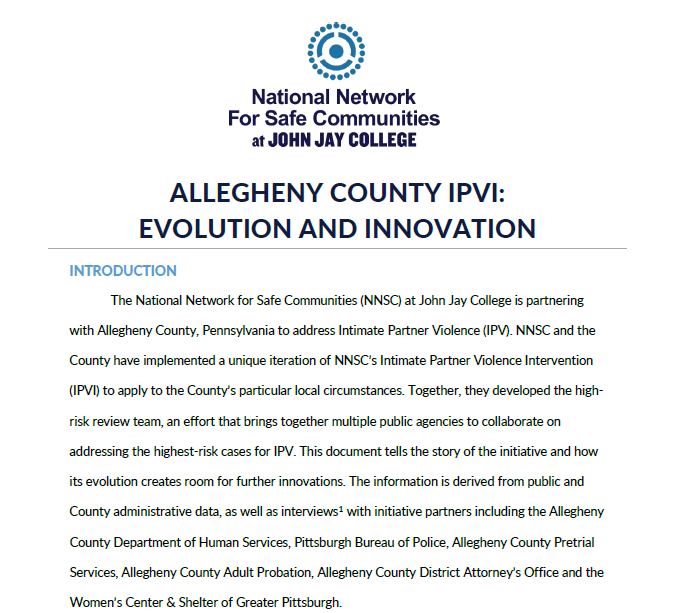
Allegheny County Evolution and Innovation of IPV
NNSC and Allegheny County, Pennsylvania have implemented a unique iteration
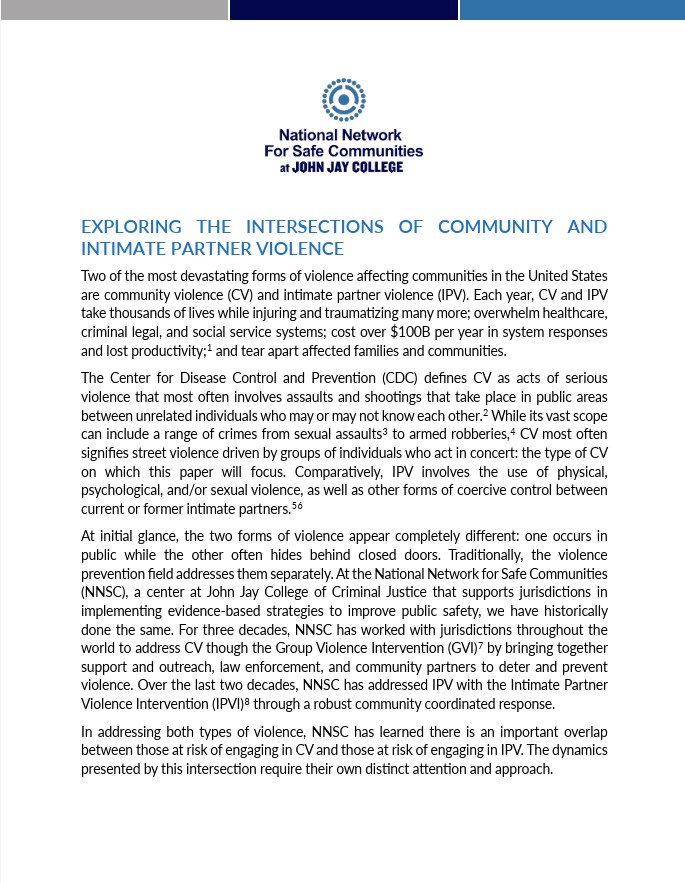
Community Violence and Intimate Partner Violence Intersections White Paper
Two of the most devastating forms of violence affecting communities
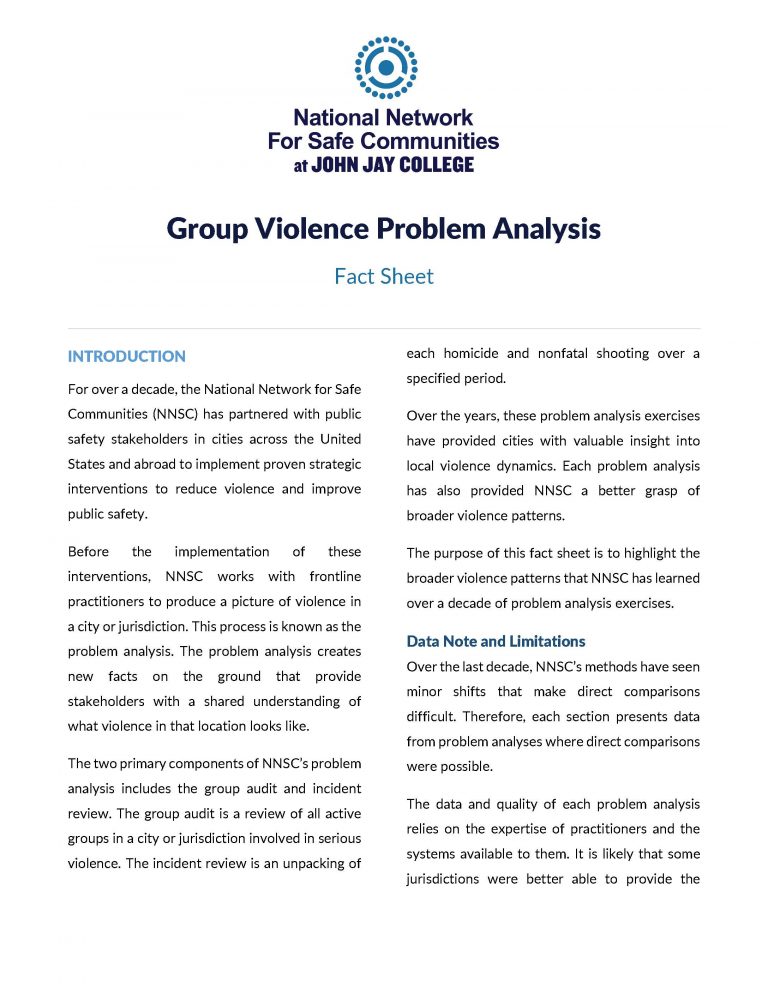
NNSC Problem Analysis Fact Sheet
The two primary components of NNSC’s problem analysis includes the

Acknowledgement of Harm: Reconciliation Practice Brief
Acknowledgements of harm—clear and specific statements about the harmful impacts of policing, delivered by police leaders—are the first step towards creating meaningful conversations about repair. Stating plainly that what happened was real and matters, when those truths have so often been swept under the rug, lends credibility to commitments to change and collaboration. Just as in interpersonal relationships, when harms go unnamed, they continue to create tension and distrust. By openly taking responsibility for these harms on behalf of their department and the broader institution of policing, police leaders make their work to build legitimacy more effective.
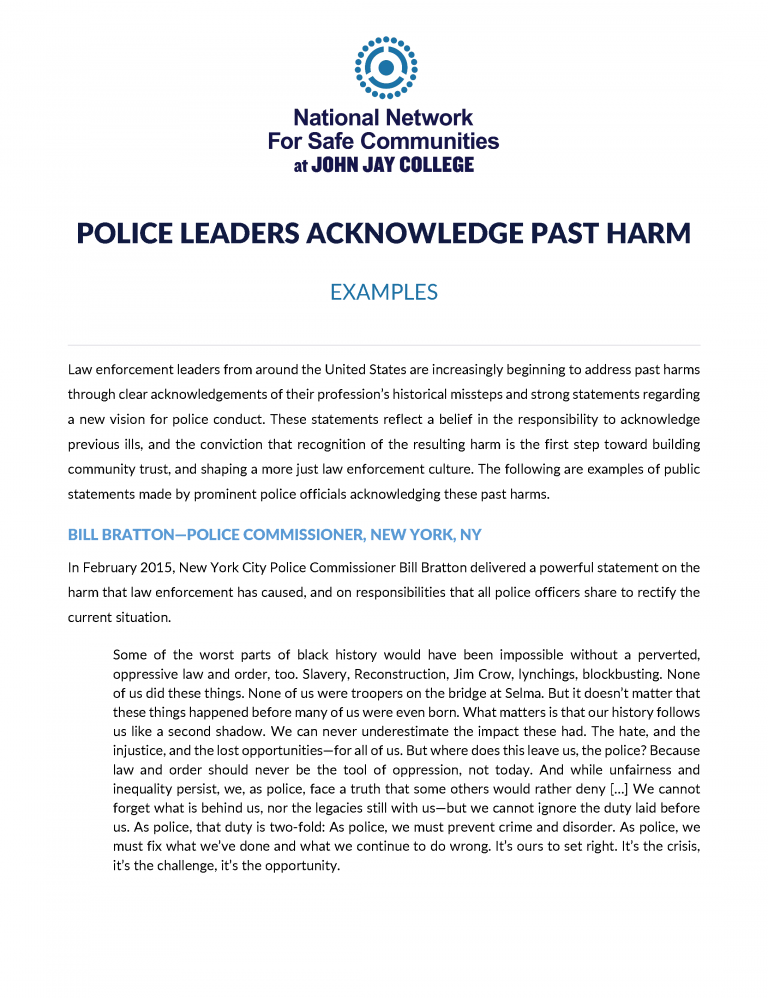
Police Leaders Acknowledge Past Harm: Examples
Law enforcement leaders from around the United States are increasingly beginning to address past harms through clear acknowledgements of their profession’s historical missteps and strong statements regarding a new vision for police conduct. These statements reflect a belief in the responsibility to acknowledge previous ills, and the conviction that recognition of the resulting harm is the first step toward building community trust, and shaping a more just law enforcement culture. The following are examples of public statements made by prominent police officials acknowledging these past harms.
Working with NNSC
Contact us to start a conversation about implementing the Drug Market Intervention in your community.
In the News
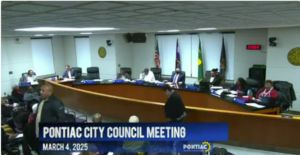
Pontiac launches group violence intervention program to reduce gun violence
City staff and community partners begin training to address violence and juvenile involvement.

Training aims to curb gun violence in Pine Bluff
To tackle gun violence in Pine Bluff and Jefferson County, members of Group Violence Intervention are learning about call-ins with would-be offenders as a way

City of Roanoke sees progress in reducing violence
The city of Roanoke is making strides in its efforts to reduce violence, with significant progress reported in recent months. The city’s Group Violence Intervention

STRIVE webinar on Intimate Partner Violence Intervention
Through the Statewide Targeted Reductions in Intimate Partner Violence initiative (STRIVE), $35 million dollars will be invested to enhance safety and responses to victims. This





